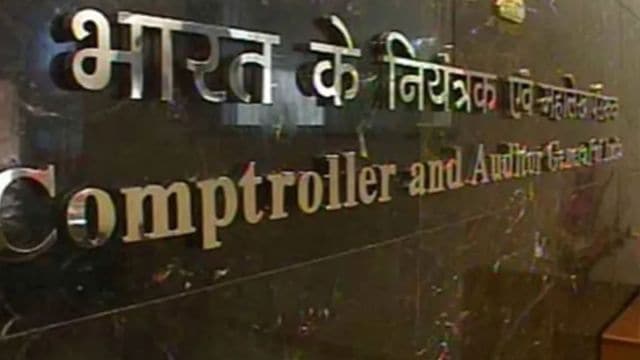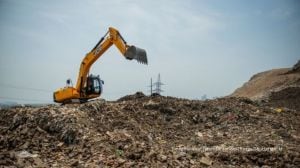Gujarat: RO plants where water is scarce, hostel 35 km from school, irregularities CAG found in border areas programme
In Gujarat, the BADP is implemented in seven border blocks of three districts — Banaskantha, Kutch and Patan
 In its audit of the BADP for the period 2016-17 to 2021-22, CAG found that not a single village out of 185 border villages were saturated with basic amenities (archive)
In its audit of the BADP for the period 2016-17 to 2021-22, CAG found that not a single village out of 185 border villages were saturated with basic amenities (archive)Constructing a 1.5 km road between villages that are 3.5 km apart, setting up RO plants where there is scarcity of water, approving tube wells where ground water is saline, building a hostel on private land 35 km away from the nearest school, and conducting public outreach programmes without allocation of specific funding: These are some of the major examples of irregularities in the Border Areas Development Programme (BADP) unearthed by the Comptroller and Auditor General (CAG) of India whose report was tabled in the Gujarat Assembly Friday.
In Gujarat, the BADP is implemented in seven border blocks of three districts — Banaskantha, Kutch and Patan. Overall, 328 works out of 958 works in 35 villages in three districts were selected for performance audit. In its audit of the BADP for the period 2016-17 to 2021-22, CAG found that not a single village out of 185 border villages were saturated with basic amenities.
The programme covers all villages, semi-urban and urban areas located within 0 to 10 km (aerial distance) from the first habitation from the international boundary.
As per the BADP guidelines of 2015, the saturation of a village requires basic facilities such as road connectivity, schools, sports facilities, health services, electricity, water supply, community centres, and public toilets (particularly for women).
While none of the 185 villages in the 0-10 km area from the border could be declared saturated till July 2023, even the very definition of “saturated”, supposed to be based on local conditions, was not decided till January 2023 when this audit was underway.
Further, since this is a border scheme, priority is to be given to the villages identified by the border guarding force as strategic villages. In this case, it is the Border Security Force (BSF). However, according to the CAG report, “The department stated that the participation of the BSF was ensured in April 2022 and due priority was given to the projects suggested by BSF. During the exit conference in July 2023, the secretary of the home department directed the district officials to obtain the list of strategic villages from the BSF. However, the audit found the reply of the department unconvincing as meetings of the DLC were not held regularly.”
Planning and evaluation, or lack thereof
“The district authorities did not conduct a ‘need analysis’ in the border villages in the form of a baseline survey to assess the gaps in basic physical and social infrastructure,” said the report.
Only the District Level Committee (DLC) in Patan conducted all five yearly meetings for the Annual Action Plan (AAP) between 2016 and 2021. Banaskantha did not hold any meetings in 2019-20 and 20-2021. Further, Kutch also held only three meetings out of five.
“In these five years, the State Level Steering Committee (SLSC) also conducted only three of five meetings. The department told the audit that they did not conduct the meeting because collectors of Banaskantha and Patan could not attend them due to heavy rains in 2017-18 and unavoidable circumstances in 2018-19…,” said the report.
Further, in the five years under audit, there were several delays by the DLCs in submitting their AAPs at the state level, and the state further delayed sending them to the Government of India (GoI). In the five years, the delays ranged from 45 days to 196 days.
An example of unplanned execution of projects is that, in 2018-19, the Centre approved Rs 10.86 crore for construction of two Centres of Excellence (CoEs) — one for hospitality in Kutch and another for construction services in Patan district. Gujarat State Police Housing Corporation (GSPHC) was allotted both the works in 2019. However, it found that the land in Kutch was not suitable while the land in Patan was forest land. Re-allocation of land for both projects was done in 2020 but the GSPHC informed that the funds were insufficient. The project was then given to the Department of Labour and Employment but they said that Industrial Training Institutes already exist in these areas and thus, the CoEs were not required in the first place. These were finally cancelled in February 2022.
Health, social sector continually neglected
“There was deviation from the suggested share of funds for various sectors under BADP. As a result, the health sector and social sector continually remained neglected during the Annual Action Plan period 2016-17 to 2019-20, and no work was done in 2021 and 2022 due to government restrictions (Covid-19),” said the report.
A total of 958 works were undertaken of which only 241 (25%) projects were completed during the term of the respective AAPs.
Violation of guidelines, irregular use of funds
Between 2016-17 and 2019-20, a total of 133 (12.16%) works costing Rs 20.089 crore were cancelled without approval from the Centre. In lieu of these cancelled works, the department – again, without the approval from the GoI – sanctioned 50 new works aggregating to Rs 22.93 crore. The department told the audit that post facto approval with detailed justification was sought from the GoI. However, this was still in violation of the provisions of the BADP guidelines.
The audit observed that an exhibition was organised at Dhordo in Kutch in November 2020. Though the home department of the Gujarat government requested the GoI to provide the fund spent on the exhibition, it was rejected. The state used Rs 6.27 crore from its share of BADP, but the audit found that no additional funds are provided by the state under the project in order to incur this expenditure.
While open tenders need to be invited for works costing between Rs 5 lakh and Rs 30 lakh, there were seven works, aggregating to Rs 6.43 crore, in 2016-17 and 2017-18, which were executed without following the open tendering process. This included setting up LED street lights in two villages of Banaskantha.
There were also cases where excess payment was made to contractors for unfinished works. Between 2016-17 and 2019-20, the department executed 20 works costing Rs 8.87 crore that were inadmissible as per the BADP guidelines. Liquid damages running into Rs 37.93 lakh were not recovered at the time of making payment of running account or final bills to the contractors.
No inventory of assets
Under the BADP guidelines, the state government has to maintain an inventory of assets created under the programme. These assets should be geo-mapped and uploaded on specific thematic layers on the Bhuvan platform/BADP-OMS.
However, between 2016-17 and 2019-20, while a total of 958 works were completed under the BADP, neither the state nor the districts developed any inventory of these assets. Besides, neither were these assets geo-mapped nor were their details uploaded on the online platform.
Unfeasible Infrastructure
Some of the examples of unfeasible structure include:
1. The AAP for 2015-16 for the construction of a student’s hostel in Khavda was completed in March 2019 at a cost of Rs 38.75 lakh. The audit observed in June 2022 that the hostel was located 2.5 km from the nearest habitation and 3.5 km from Khavda village. Further, it was constructed on the private land of a trust. The hostel was located 35 km away from the residential school in the village of Gorevali. It lay unused till July 2023.
2. A milk collection centre in Khatiya village was completed in August 2017 at a cost of Rs 5 lakh. The centre was never put to use, indicating that the work was planned without “need analysis”.
3. Drilling of seven tube wells for blending with Narmada water in five villages of Kutch was approved at Rs 91 lakh in September 2019. An investigation report suggested that there was a possibility of highly saline water at these spots. The project was cancelled in September 2020.
4. RO plants in primary schools of five villages of Banaskantha district were completed in April 2018 at a cost of Rs 16 lakh. However, in the villages of Chothar Nesda and Rachhena, the RO plants were not put in use till August 2022. The official there stated this was due to scarcity of water.
5. Gar Vandh village is 3.5 km from Ghaduli. However, in 2016-17, the R&B Panchayat division in Bhuj proposed construction of only a 2.5-km-long road at a cost of Rs 70 lakh. At the time of giving technical sanction, the same division stated that with the approval outlay of Rs 1 crore, only 1.5 km of road could be constructed. As a result, against 3.5 km, only 1.5 km of road at a cost of Rs 60.60 lakh was actually constructed. The rest of the stretch remained a kutcha road as of July 2023.








